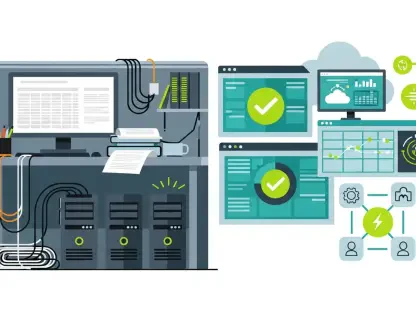It’s a scenario many businesses dread: a compliance oversight suddenly spirals into a hefty financial burden, causing shockwaves throughout the organization’s financial framework. A striking example is the recent $40,000 settlement faced by a Maryland plant nursery after mishandling an employee’s maternity leave return. This not only triggered a federal pregnancy discrimination lawsuit but also brought to light the significant financial risks that can stem from compliance lapses. For finance leaders, this incident underscores the urgency of addressing compliance risk proactively, transforming it from a potential financial pitfall into a manageable aspect of business operations.
The financial repercussions of compliance failures are vast, stretching far beyond legal fees. They encompass unplanned settlements, resource misallocation, increased scrutiny during audits, and potential damage to a company’s reputation. In industries with high turnover rates or seasonal staffing, such compliance risks become a recurring challenge with significant financial implications. Therefore, finance leaders must adopt a strategic approach to compliance risk management, viewing it as an integral part of the organization’s fiscal health. By embedding compliance into risk forecasting models and other financial systems, they can mitigate these risks, improving decision-making and safeguarding the company’s financial integrity.
1. Incorporate Compliance into Risk Prediction Models
Proactively integrating compliance risk into operational risk models has become essential for businesses aiming to protect themselves from unexpected financial hazards. The first step involves treating compliance risks as a distinct category within the organization’s operational risk registry. This ensures that potential compliance-related issues are identified and tracked systematically, allowing for better foresight and preparation. Regularly updating this registry with insights from recent incident trends and agency enforcement activities further enhances its effectiveness.
Designation of legal reserves based on ongoing regulatory activities is another critical strategy. Companies should closely monitor enforcement patterns by agencies such as the EEOC and DOL to allocate adequate legal funds. This forward-thinking approach not only safeguards against unexpected legal fees but also enhances the organization’s ability to respond swiftly to compliance challenges. Additionally, monitoring claims related to specific compliance areas, like maternity leave or return-to-work policies, helps pinpoint departments where compliance risks are most prevalent, allowing targeted interventions and resource allocation.
2. Proactively Identify Compliance Gaps: Ensure Processes are Audit-Prepared
Ensuring that processes are readily auditable is a proactive measure to mitigate compliance risks effectively. This involves instituting periodic assessments of leave administration systems, focusing on return-to-work communications and decision logs. By regularly reviewing these procedures, organizations can identify potential weaknesses or inconsistencies that might lead to compliance violations. Structuring these assessments with clearly defined criteria ensures that all relevant aspects are thoroughly evaluated, maintaining a high standard of audit readiness.
Moreover, financial oversight must be incorporated into high-risk processes such as job reinstatement, accommodation evaluations, and leave extensions. This integration requires establishing clear documentation protocols that emphasize transparency and accountability. Elements such as time-stamping, manager approvals, and explicit justifications for decisions should be standardized across the organization. Such measures not only enhance process reliability but also provide a strong defense during audits or investigations, ensuring that all operational decisions are backed by comprehensive and verifiable records.
3. Allocate Funds for Specific, Evaluative Training
Investment in targeted training is a crucial component of a robust compliance risk mitigation strategy. Such training should be role-specific and based on actual scenarios, offering practical insights that resonate with employees. Allocating funds for brief, impactful training sessions ensures that staff at all levels are equipped with the knowledge to handle compliance issues effectively, reducing the likelihood of oversights and errors. Equally important is tying training completion to managerial performance objectives, embedding compliance risk reduction as a core component of performance evaluations.
To foster accountability and reinforce the importance of compliance training, organizations should meticulously document training sessions, including employee acknowledgments and managerial confirmations. This not only tracks progress and ensures participation but also serves as a crucial record that can be referenced in case of future compliance inquiries or disputes. By establishing a culture of continuous learning and accountability, businesses can significantly enhance their resilience against compliance-related financial risks, protecting both their workforce and their bottom line.
Compliance Failures: A Manageable Expense with Strategic Planning
Compliance failures, while risky, are manageable when anticipated and integrated into financial planning. Historical data suggest that preemptive investments in compliance training and risk management can be more cost-effective than reactive measures post-violation. Finance leaders are urged to view compliance risk management not merely as a legal necessity but as a strategic imperative that reinforces the organization’s financial resilience and operational integrity. By prioritizing thorough training, systematic audits, and comprehensive documentation practices, businesses can effectively transform potential compliance pitfalls into controllable, predictable expenses. This forward-thinking approach not only safeguards financial stability but also positions companies as responsible entities that are equipped to handle the complexities of modern regulatory environments.









